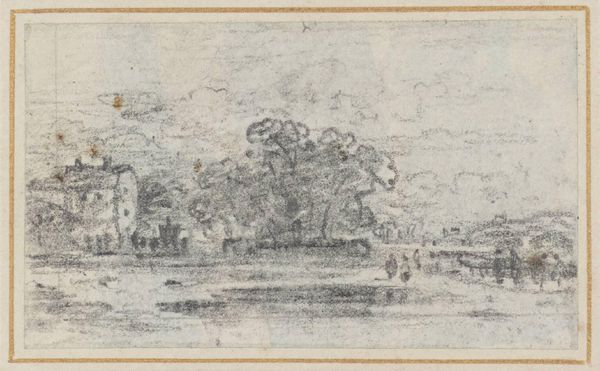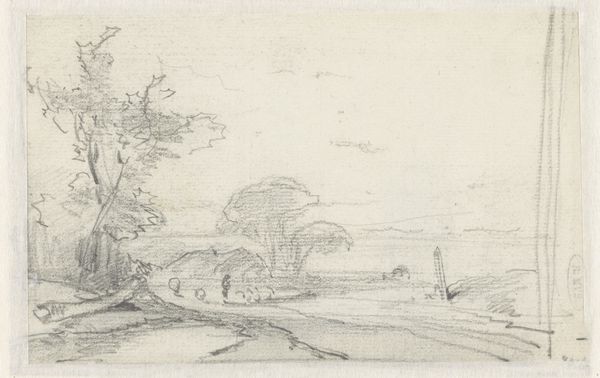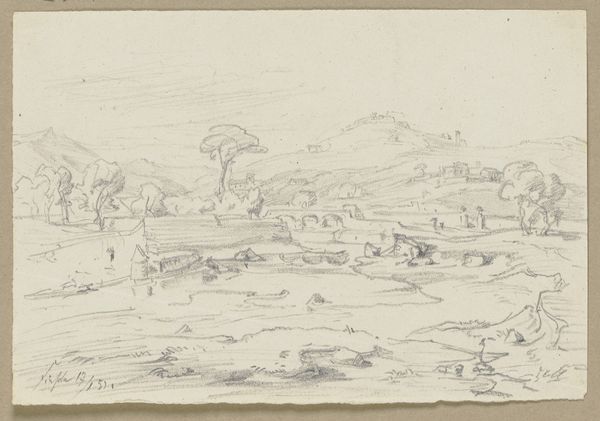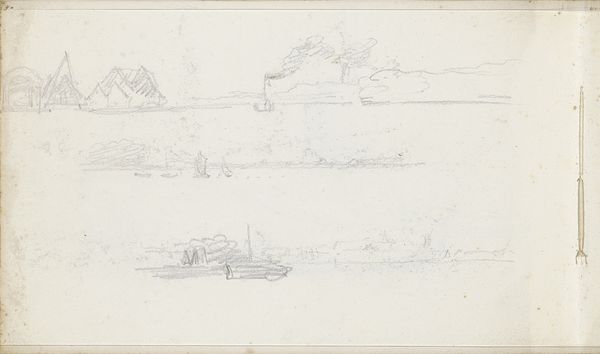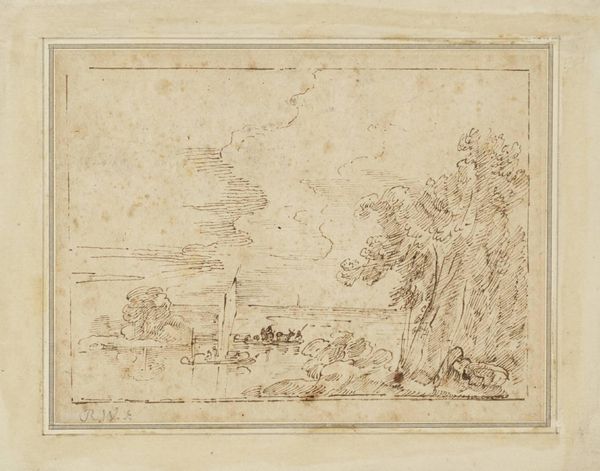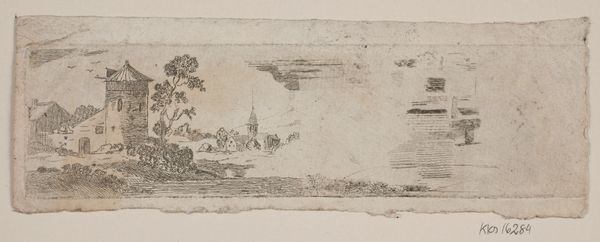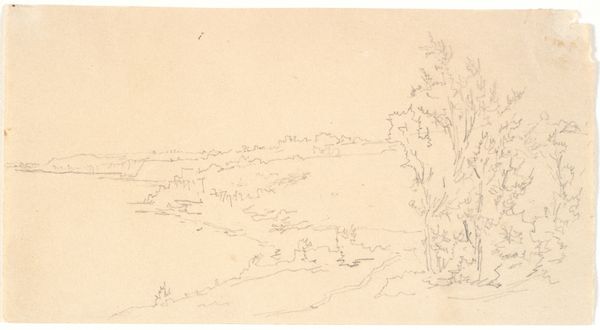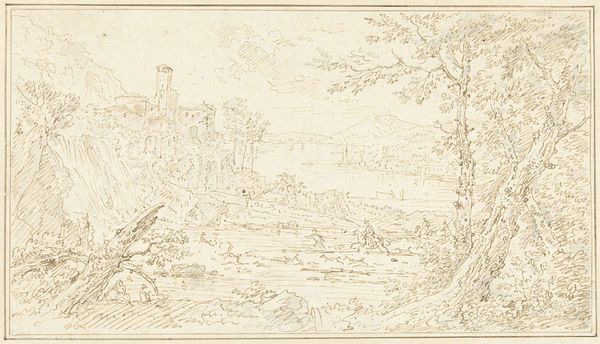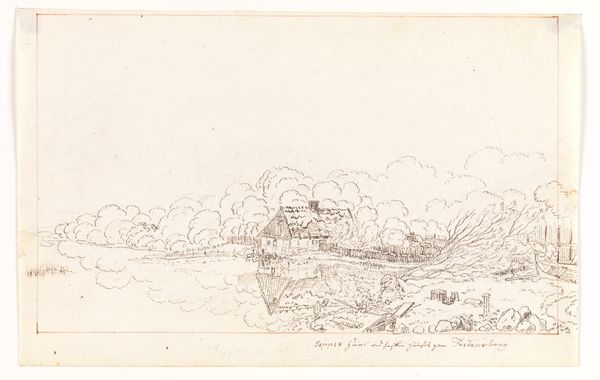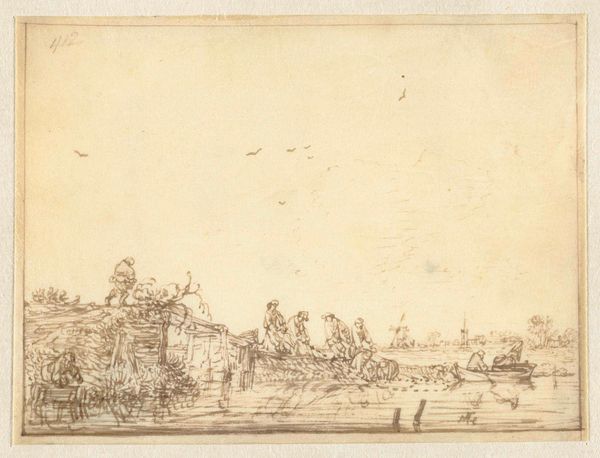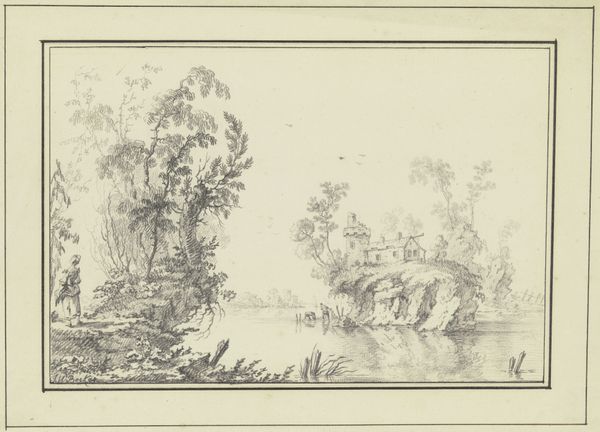
Dimensions: sheet: 2 11/16 x 4 1/2 in. (6.8 x 11.4 cm)
Copyright: Public Domain
Curator: This is Heinrich Dreber’s “Southern Landscape with a Building,” a graphite drawing likely created between 1850 and 1863. It’s currently held at the Metropolitan Museum of Art. Editor: The scene has a rather melancholic, dreamy feel about it. The pencil strokes are very soft, and even though it depicts a landscape with structures, the composition feels very ephemeral, almost fading away. Curator: It’s interesting that you mention 'fading'. I see this work as less about capturing a perfect likeness and more about Dreber’s relationship with the architecture. The visible pencil strokes are very telling – note the various applications for the trees versus the hard lines of the structure; he’s showcasing the physical act of making art and reflecting on different materials that make up his visual landscape. Editor: Absolutely, and that act of creation has social implications as well. During the Romantic period, landscapes like this were often viewed through a lens of national identity and longing for idealized pasts. A view of Rome would've carried considerable cultural and political weight for artists like Dreber—what did that cultural production look like in comparison to other cities, other buildings? And, of course, that also meant thinking about labor, and how structures shape a city through time. Curator: Precisely! Thinking about labor and technique, Dreber would have needed a specific grade of graphite for different shading. This raises the question of what type of labor that was, and how it could have created visual meaning for Dreber and audiences who saw his work? How does that relate to academic figure drawing? What new drawing styles emerged from these considerations? Editor: Thinking of audiences is key: Did people respond differently to sketches like these, compared to more finished paintings or engravings? What would that response say about 19th-century views on nationhood and belonging? The landscape feels as though he's reflecting the relationship between progress and ruin that would have captivated many at that moment. It poses all sorts of questions on value—historical, artistic, economic. Curator: It absolutely pushes the boundaries between artwork as high art versus craft by looking at consumption and materiality of it as labor in his time! Editor: Ultimately, this "Southern Landscape" shows how the simple medium of a drawing can reveal profound cultural layers that speak volumes beyond the lines on paper.
Comments
No comments
Be the first to comment and join the conversation on the ultimate creative platform.
